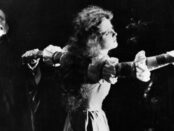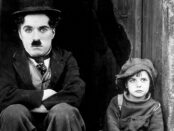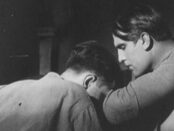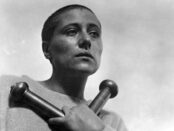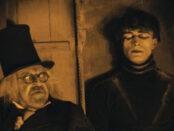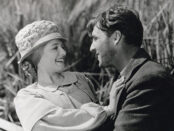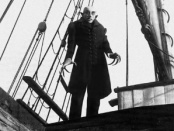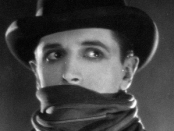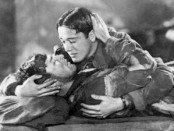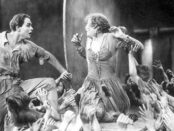[7] Just a few years before sound wiped out the silent cinema, Universal Pictures had one last major hit with The Phantom of the Opera. Based on Gaston Leroux’s novel, the film centers on a young opera starlet named Catherine (Mary Philbin) who makes a pact with a mysterious ‘ghost’ who haunts the Paris Opera House. He’ll make Paris audiences worship her if she’ll just …
silent film
[7] Charlie Chaplin made the leap to feature films writing, producing, directing and scoring The Kid, in which Chaplin’s famous Tramp character finds and cares for an orphaned child (Jackie Coogan). While The Kid doesn’t quite escape the episodic quality of Chaplin’s short films, it’s got a connecting throughline where it counts the most — the heart. At first the Tramp tries many ways to …
[7] William Dieterle (The Hunchback of Notre Dame, The Devil and Daniel Webster) directs and stars in this transgressive German silent film about a married couple who endure prolonged, maddening abstinence after the husband (Dieterle) is sentenced to three years in prison. While Dieterle develops a same-sex relationship with one of his cell mates, his wife (Mary Johnson) retreats into the arms of her kindly …
[7] Near the end of the silent film era, Carl Theodor Dreyer (Vampyr) would deliver one of the medium’s most powerful titles — The Passion of Joan of Arc. Maria Falconetti stars as the nineteen-year-old French heroine who fought to rescue France from English domination during the Hundred Years War. But she was eventually captured by the English, and Dreyer’s film focuses on her trial …
[8] In this seminal silent classic, a doctor showcases a fortune-telling sleepwalker to a crowd of spectators. One man asks, “When will I die?” The sleepwalker says, “By dawn tomorrow.” And then the doctor sets out to fulfill the premonition by ordering his catatonic slave to murder the man that night. This isn’t just how The Cabinet of Dr. Caligari begins — it’s also how …
[7] Some of the most enduring films from silent cinema were directed by F.W. Murnau (Nosferatu). One of those classics is Sunrise: A Song of Two Humans, about a man (George O’Brien) who is coerced by a lascivious city girl to kill his neglected wife (Janet Gaynor) so they can be together. The man tries to follow through with the plan while sailing with his …
[7] Of the handful of silent films that still have shelf life, Nosferatu is perhaps the most popular. It’s the cornerstone of the entire horror genre, as well as the first time audiences ever saw a vampire on film. It’s an adaptation of Bram Stoker’s Dracula, but for legal reasons, the character names have been changed. The pacing, like most silent films, requires a little …
[5] A London couple begin to suspect their new lodger might be a serial killer who preys on blonde women. And it just so happens their daughter is blonde. And dating one of the detectives on the case. Even though it’s a short film, I had trouble keeping alert throughout The Lodger — maybe I’m just not accustomed to watching many silent films. Still, I …
[8] Director William Wellman took a full year to shoot it and was nearly fired for his perfectionism, but the gamble paid off. Wings was a huge success at the box office and became the first ever Oscar-winning Best Picture. At two-and-a-half hours, it runs a little too long, but it’s well paced and very well acted. The spectacular aerial battle sequences are what the …
[10] Fritz Lang directed and Thea von Harbou scripted this grandfather of science-fiction films about violent class warfare in a futuristic city. The hero of Metropolis is Freder (Gustav Fröhlich), a privileged playboy who enjoys a life of luxury until a chance encounter with the beautiful Maria (Brigitte Helm) brings him to discover the city’s entire working class is living in the harsh underground to …

